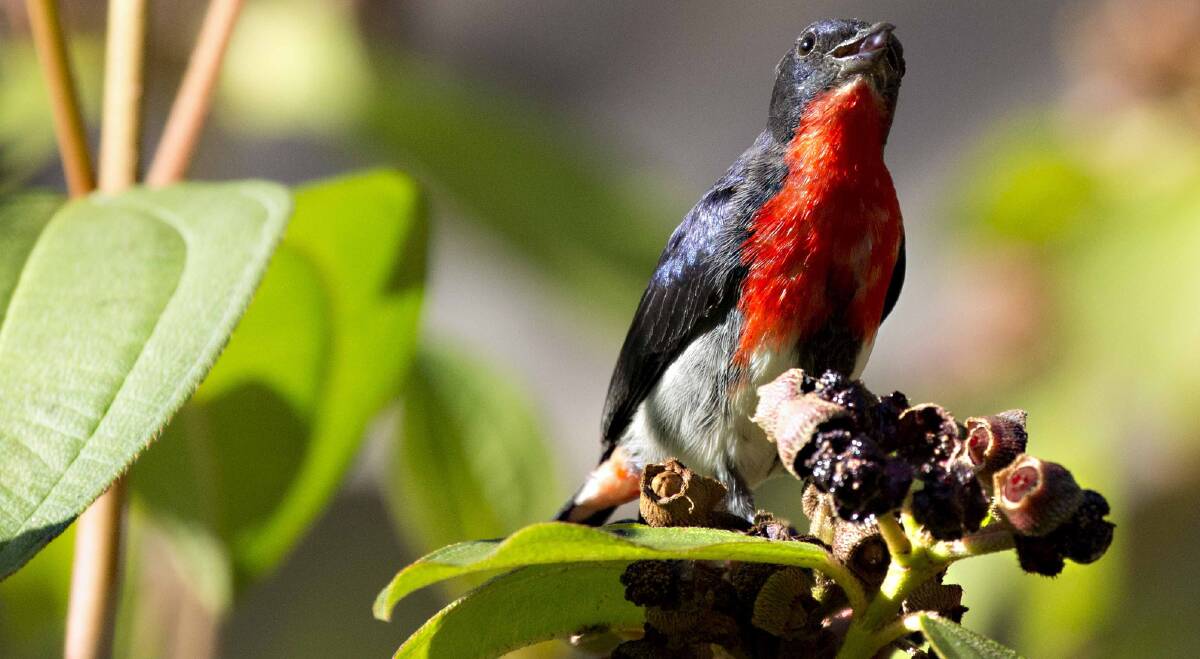
Mostly seen in spring and summer in the Ballarat region, the mistletoebird’s movements are governed by its food of mistletoe berries.
Subscribe now for unlimited access.
or signup to continue reading
Quite a bit smaller than a sparrow, the male is a stunning little bird with a robin-like red chest.
Below this is a dark line down the centre of its front.
A specimen from Lal Lal was brought to the latest meeting of local bird observers, having previously hit a window and died. It was in excellent condition, so its colouring and markings were appreciated by all.
The mistletoebird is not uncommon locally.
But it is seldom easy to see because it mostly feeds in the treetops and flies rapidly.
In spring, it may come lower and sometimes nests only a few metres from the ground.
Mistletoebirds are active, fast-moving little birds.
Only the male has the red chest and the glossy blue-black back.
The female is a brownish-grey colour, but she has a distinctive pale red patch under her tail.
Mistletoebird wings are long, as we noticed when handling the recent dead specimen. They reach almost to the tail tip. The tail is short.
The full length of the bird, from beak to tail tip, is just 11cm. This is smaller than a silvereye.
The mistletoebird is found across all of mainland Australia, but not in Tasmania (where there are no mistletoes).
Knowledge of its brisk, high-pitched call results in more sightings.
This species is the main disperser of mistletoe seeds, enabling mistletoe plants to spread from place to place. It is more common in box-ironbark forests where mistletoe plants are numerous, such as around Lexton, Clunes and Campbelltown.
LAKE WALK
Members of BirdLife Ballarat will lead a walk for anyone interested in learning more about Lake Wendouree’s birds this Sunday.
Many waterbirds have departed since heavy rains, but numerous species are sure to be discovered.
Birds in trees always add interest as well. The walk starts at the cannon near Piper’s restaurant at 9am. For more details, phone 5332 1162.
CRESWICK BIRDS
A new bird can be added to the Creswick list – the blue-faced honeyeater.
A July 2013 photo of a pair at a water bowl has arrived to support the rare sighting.
This was taken in a garden on the eastern side of Creswick.
The blue-faced honeyeater has not been seen in Creswick since, but a small population lives at Clunes. No others are known in the Ballarat region.













